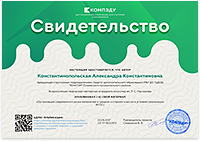| LESSON: FOOD | School: | |||||||
| Date: | Teacher name: Kozhanbaeva Botagoz | |||||||
| CLASS: 1 | Number present: | absent: | ||||||
| Learning objectives(s) that this lesson is contributing to | 1.L4 recognise basic intonation distinguishing questions from statements 1.S3 pronounce basic words and expressions intelligibly 1.S5 produce words in response to basic prompts 1.UE9 use basic present simple forms [positive and negative] to give basic personal information | |||||||
| Lesson objectives |
short Yes/No answers
short Yes/No answers Most learners will be able to: express their likes and dislikes, using present simple forms [positive and negative] Some learners will be able to read the new wordsAll learners will be able to: name the food, recognize closed questions and give short Yes/No answers | |||||||
| All learners will be able to: name the food, recognize closed questions and give short Yes/No answers Most learners will be able to: express their likes and dislikes, using present simple forms [positive and negative] Some learners will be able to read the new words | ||||||||
| Previous learning | Names of food: milk, cheese, bananas, juice, eggs, chicken Grammar structures: I have got … I like… I don’t like | |||||||
| Plan | ||||||||
| Planned timings | Planned activities (replace the notes below with your planned activities) | Resources | ||||||
|
5 minutes
| ORGANIZATIONAL MOMENT Teacher: Good-morning boys and girls! Children: Good-morning, teacher! Teacher: Let’s remember our poem “Hello” It’s time to say “Hello”! It’s time to say “Hello”! It’s time to say “Hello”! And start our lesson! Reviewing of previous learning: repeat after teacher: milk, cheese, bananas, juice, eggs, chicken; teacher asks: Do you like…? using reviewed words, elicit full answers from the learners: Yes, I like milk. No, I don’t like cheese.
PHONETIC DRILLS Teacher: Look around the classroom and chant with me. 1, 2, 3 point to the door! 3, 4, 5 point to the floor! 5, 6, 7 point to the wall! 8, 9, 10 stand up tall! |
| ||||||
| Middle 25 minutes
minutes
| Then teacher draws children’s attention to Mystery box Learners sing the song. Then they speak up their ideas about what is in Mystery box (words from previous lessons). Teacher stops them, takes out pictures one by one and names fruits and vegetables: apples, pears, onions, carrots, tomatoes
Whole class activity Teacher invites children to look at the pictures and starts talking with them about these fruits and vegetables: I like apples. Do you like apples? And you? …
Then learners repeat names of fruits and vegetables (3 times), watch the clip and learn miming and expressing emotions for likes I like apples
Task 1 Learners point to the pictures and say in pairs I like apples (apples, pears, onions, carrots, tomatoes); Then learners display their likes before the group. Descriptor: learners say sentences with correct intonation, miming and emotion
Whole class activity Children watch the clip and learn miming and expressing emotions for dislikes I don’t like apples.
Task 2 Learners look at the pictures and say in pairs I don’t like apples (apples, pears, onions, carrots, tomatoes). Then children display their likes before the group. Descriptor: learners say sentences with correct intonation, miming and emotion
Teacher says sentences with new words (I like.., I don’t like…) with movements (clapping hands, waving, stamping feet, turning around, jumping). Children look, listen and do with the teacher.
Game: listen and guess the word Teacher pronounces consonant sounds of the words (apples, pears, onions, carrots, tomatoes), learners say the word.
Whole class activity Children listen, look at ABC cards, chant and point to the letters.
Game: look, identify letters, recall the sounds and guess the word Teacher shows the words written without vowels. Helps children to recall consonant sounds, and elicits new words from the learners (apples, pears, onions, carrots, tomatoes). Then the teacher shows the word written in full and the picture. | Pictures of fruits and vegetables
Pictures of fruits and vegetables
Do you like broccoli ice cream?/Food Song www.youtube.com
Pictures of fruits and vegetables
Cards with fruits and vegetables https://www.youtube.com/watch?v=B5csN8gQY4E ABC chant (mp 3) ABC cards
| ||||||
| End 5 minutes | An activity to consolidate the language of the lesson Explain the game. You whisper a school item to the first child, who whispers it to the child sitting next to him/her and so on. The last child calls out the word. Well what did we do in our lesson?
Give the home task Learn the spelling of foods
Good bye song Students sing a good-bye song and dance to the tune repeating the moves shown in the video |
https://www.youtube.com/watch?v=Xcws7UWWDEshttps://www.youtube.com/watch?v=Xcws7UWWDEs | ||||||
| Additional information | ||||||||
| Differentiation – how do you plan to give more support? How do you plan to challenge the more able learners? | Assessment – how are you planning to check learners’ learning? | Cross-curricular links | ||||||
|
|
| ||||||
| LESSON: Sport
| School: | ||||||
| Date: | Teacher name: Botagoz Kozhanbaeva | ||||||
| CLASS: 5 | Number present: | absent: | |||||
| Learning objectives(s) that this lesson is contributing to | 5.L4 understand the main points of supported extended talk on a range of general and curricular topics; 5.W4 write with support a sequence of short sentences in a paragraph to give basic personal information 5.R6 understand the main points of short simple texts on a growing range of general and some curricular topics using contextual clues 5.UE10 use present continuous forms with present and future meaning on a limited range of familiar general and curricular topics;
| ||||||
| Lesson objectives | Activation in speech of lexical units according to the "Sport" Introduce yourself to me My favorite sport;
Development of attention,
Formation and development of speech competence;
Formation of students' interest in learning a foreign language
The formation of cognitive activity learning. Activation in speech of lexical units according to the "Sport"
Introduce yourself to me My favorite sport;
Development of attention,
Formation and development of speech competence;
Formation of students' interest in learning a foreign language
The formation of cognitive activity learning. | ||||||
| Introduce yourself to me My favorite sport; Development of attention, Formation and development of speech competence; Formation of students' interest in learning a foreign language The formation of cognitive activity learning. | |||||||
| Previous learning | Learners are expected to know various sports from previous grades.
| ||||||
| Plan | |||||||
| Planned timings | Planned activities (replace the notes below with your planned activities) | Resources | |||||
|
minutes
| Organizational moment: greetings, children stand in a circle and greet each other in English and receive a card with a sport, are divided into groups and speak the topic of the lesson. (Football, volleyball, basketball) 2min Sit down on the group, look at the pictures and tell the topic of the lesson. What we will do. Good. The lesson theme is Sport. In the lesson, we must study new words with you, study structures. Do you want a favorite sport? I. Warm-up: It’s time to have a rest. Stand up, please. Hands on the head, hands on the hips, Hands on the table, hands like this. Hands on the shoulders, hands up and down, Hands behind the head and sit down!
|
| |||||
| Middle minutes
minutes
|
2) Intellectual training: Listen to the words in English and repeat, find them in the verbal box:
1 baseball 2 badminton 3 gymnastics 4 hockey 5 basketball 6 football 7 tennis 8 volleyball (3 minutes)
Today we will meet you with a new part. What is your favourite sport? Teacher: My favourite sport is hockey. Do you do judo? No. Do you do gymnastics? Yes. Do you play basketball? Yes. II Theme 1) Learn the structure What is your favourite sport? (repeat after me, read and work in group: Ask pupil What is your favourite sport? What do you do?) 3min 2) Listening. Listen to the small dialogues and write who is it? Answer the question What is her favourite sport? 3min
Name Jasmin Patel Age 9 Her favourite sports are….
Name Molly Finch Age 8 Her favourite sports are…
Name Eve Wilkins Age 8 Her favourite sports are…
You have texts on the tables. Read the text of each individually and perform the task "True-False". Pay attention to the new phrase to do sports - play sports IV Reading Read the text about Ben. Hello. My name is Ben. I’m 11. I go in for sport. I like to play football. I go to the stadium to play football. I can play football very well. My favourite sport is judo. I cannot play basketball. My father can play baseball very well. What sport do you like? True/False
Great. So, you read the text about Ben, now you need to send him a letter, but you have to assemble into new groups. Find the pair. You have a picture with an object in your hand, your goal is to find a sport and sit on this chair forming a group. So, we have three groups and your task. Each group chooses the one that can run for 5 minutes. (2 minutes) Different level tasks: evaluation criteria: «3» - fill out the questionnaire and represent the group «4» - fill out the questionnaire, add 1-2 suggestions about yourself and tell «5» - fill out the questionnaire, add 4 offers about yourself and tell about Ben (5min) |
| |||||
| End minutes | The main task Each student chooses a different level of homework «5» - write message to friend «4» - to make a poster My favorite sport «3» - make a verbal square Now we choose homework. Reflection Test: choose the right answer and put the mark 9-10-5 8-7-4
Check and put the marks to the answer-sheet. Feedback. What did we learn today? What did they study for? What did you like and did not like? What difficulties arose? What else should I study? On the stickers write your name and write a wish so that you would like to learn more and attach your sticker. (2 minutes) Evaluation. Each pupil gets the sticker an write what they like today |
| |||||
| Additional information | |||||||
| Differentiation – how do you plan to give more support? How do you plan to challenge the more able learners? | Assessment – how are you planning to check learners’ learning? | Cross-curricular links | |||||
|
|
| |||||
What does the smiley hide?

Success criteria:
1. Name types of food and drinks in singular and plural forms
2. Say what kind of food he or she likes and dislikes
3. Use structure Do you like…? And respond on a question;
I. Join products with their categories
1.Food

2.Drink
3.Vegetable
4.Fruit
Describe what to like and dislike, using the correct vocabulary and grammar. For example:
I like bananas.
I don’t like carrots.












